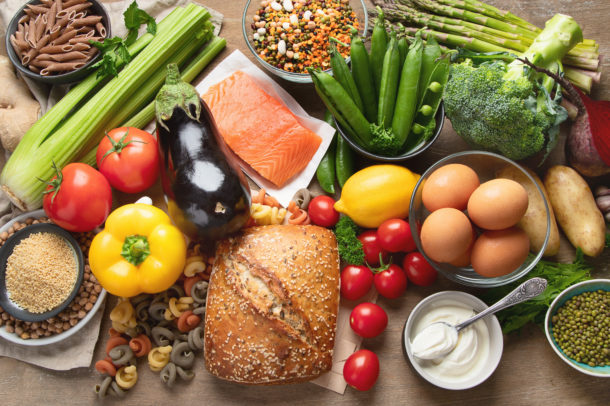By Dani Renouf, RD, MSc, CDE
Many patients living with chronic kidney disease need to be aware of how much potassium and phosphate they consume in their diets. Monitoring intake can become a very tricky task since most of the foods we eat daily are sources of phosphate and potassium. So then, the question arises: “What is there left to eat?”
Follow these “Top Three Tips on Limiting Inorganic Potassium and Phosphate” to expand your dietary variety, gain more confidence in your food choices, and feel better overall!
- Reduce Processed Foods. It is necessary to limit potassium and phosphate to protect heart health since high potassium and phosphate levels may affect heart function and circulation. Keeping levels of potassium and phosphate stable in the blood will help to ensure good heart muscle function long term.
However, not all food sources of minerals such as potassium and phosphate are created equal. Processed foods, packaged foods, or prepared foods from restaurants often contain additives from inorganic sources of potassium and phosphate. These tend to raise blood levels of both minerals rather quickly. To reduce the use of these foods, check labels carefully for ingredients that contain the words “potassium” and “phos.” Remember that these can be hidden in foods such as pickles, deli meats, and non-dairy creamers, to name a few.
- Choose More Whole Grains, Fresh Fruits and Vegetables More Often. Nutrition guidelines may have restricted potassium and phosphate from natural and inorganic sources in the past. Today, we know that phosphate found in whole grains and potassium in fruits and vegetables are mainly bound to fibre, which is very important for our health. Choosing high fibre foods more often will help you achieve better potassium and phosphate control because they are more easily eliminated through the bowel.
- Check Out Your Protein Needs. Speak to your dietitian about including the suitable types and amounts of proteins in your diet. Proteins can be a source of potassium and phosphate. However, if you choose less processed and more plant-based options such as beans, lentils, and legumes, you can achieve your protein needs while maintaining potassium and phosphate levels. It is nice to know that canned plain beans and lentils have already been processed, so they are lower in potassium and phosphate. Just give them a quick rinse and use them in your favourite dishes.
A dietitian can support meal planning and focus on a meal pattern rather than “good” or “bad” foods.
You can confidently choose nutritious and enjoyable foods with these tips in mind.
